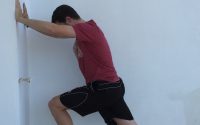Rehab and Exercise Fundamentals
For those that have been reading a long time, it’s no surprise to see my interested in the fundamentals of rehab. I’m loving working with my patients at the moment. We have some great discussions. New patients these days will have almost always been on Google looking for the answer. Though I don’t think it’s a great idea, I can’t blame people…I probably would too.
As a result, we often go down a similar route exploring what I think of what they found and why my approach differs.
My Approach to Rehab
My background led me very much down an ‘Understanding Movement’ path. Trying to work out what the joints and muscles were doing and trying to get people moving better. I was lucky to learn from some of the best in the business. I was also lucky to quickly realise that the power of better movement didn’t come because people were ‘better aligned’ or ‘more symmetrical’ or ‘by correcting muscle imbalance’. Understanding movement works…it is amazing, but maybe not for the reasons I initially thought!
These are the kind of things people come to me with. My knee hurts because I’m out of alignment or there’s a muscle imbalance. There may be some anatomical, structural, mechanical things going on and I still use a movement approach, but the understanding pain is the game changer.
I realised reasonably quickly that the changes I was able to make in someones movement could not possibly be due to structural/mechanical changes, so it had to be something else…There’s no way I increased someones shoulder ROM by 40-50 degrees with IASTM because of structural changes…no way!!
I think we’ll have to go into the pain side of things another time. Though what I try and get people doing from a movement point of view ties in so closely with the pain science side, it is impossible to separate them really!
Movement in Rehab
From the movement point of view I am looking to give the patient skills. I’m a skills coach and I want to help them move with more skill. That’s why I think the whole body movement approach works so well…even before I understood the pain science side of the equation. By getting someone moving well and with confidence you are helping their tissues and their brain.
When someone says ‘I am out of alignment’ or something along those lines, I don’t dismiss it or contradict them. However, over time, if they want to work with me I will have to change their mind about all that at some point. I think if you see your body as weak, vulnerable and out of alignment you are at risk of suffering chronic pain when you really don’t have to.
I think the approach John Hardy and the Gray Institute taught me all those year ago worked brilliantly. To start with, it got people moving, decreased the fear of movement. Also, the whole body approach to say, a knee pain patient, meant that you were looking at the foot, hips, thoracic, opposite leg etc…taking the emphasis away from the painful area….brilliant.
Understanding Movement also gives you a framework to teach movement skill. You are much more able to get people moving if you understand the reaction and interaction of joints, muscles etc. Once they are moving they have the chance to build skills.
Movement for Home Exercise
I think that interaction between joints can really help, because you once you start playing with that you can start creating emphasis on a joint/tissue or take away the emphasis. This can be useful in assessment and treatment. I use this strategy all the time in rehab…people so often have pain in 1 plane of movement at a joint and then avoid using the joint as much as possible. However, any joint has so much more than 1 plan to give. If you know how to manipulate movement in function you can create movement in other planes and build confidence in that joint.
I tend to like people to have a HEP that is pain free most of the time. This isn’t essential, but I find confidence builds faster. Like I’ve said before, once you get them moving, you can build on it…build towards more movements, build confidence. It’s also key that they understand that there may be some pain…this is where a good pain talk helps them. If they understand what’s happening it’s less likely to create fear and undermine their confidence.
There is so much to be gained from getting people moving it’s hard to cover it all. I think a movement based approach backed up by good pain science education or a pain science approach with graded movement exposure will get you great results.
Physioblogger


